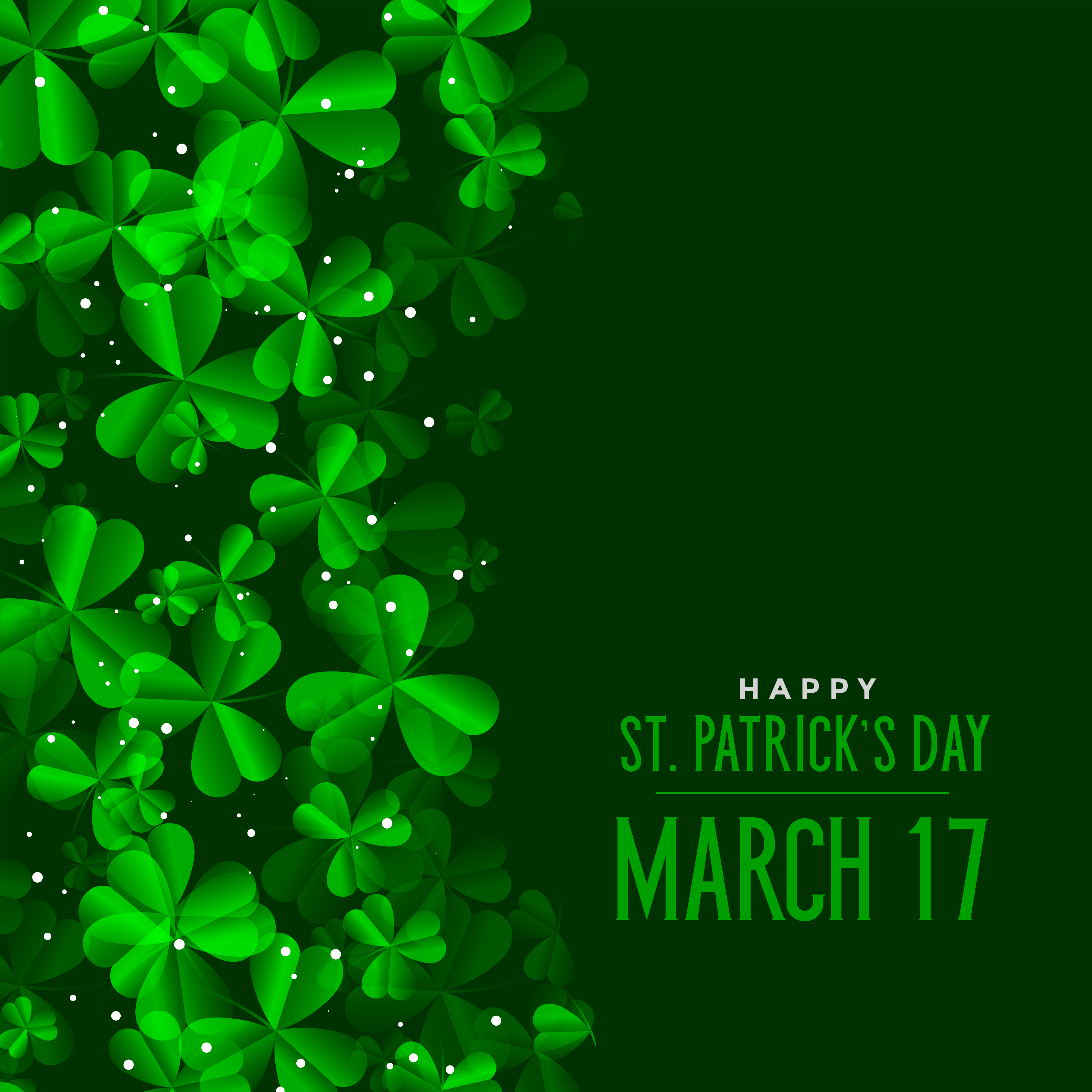The 17th of March, a day marked by parades, shamrocks, and a sea of emerald green, holds a captivating history woven into the very colors that adorn it. But why green and orange? Why not red, blue, or even a lovely shade of purple? The story of these colors goes beyond mere aesthetics, delving into the heart of Irish history, culture, and identity. It’s a tale of rebellion, pride, and the enduring spirit of a nation.

Image: www.freepik.com
For many, St. Patrick’s Day is synonymous with the hue of shamrocks, the iconic symbol of Ireland. Green, the color of the lush valleys and rolling hills of the Emerald Isle, evokes a sense of natural beauty and vibrant life. But the history of green as a symbol of Irish identity is far richer and more complex than simply being associated with nature. It’s a story intertwined with Irish nationalism and the fight for independence.
A Green Symbol of Resistance:
Green’s rise as the color of Ireland is closely tied to the Irish struggle against British rule. In the 18th century, green began appearing on Irish flags and symbols, signifying a growing sense of national unity and resistance against the dominant British presence. The green color represented rebellion, a rejection of the status quo, and a desire for self-determination.
The Irish Volunteers, a paramilitary group formed in 1778 to defend Ireland against potential French invasion, adopted green as their official color, further solidifying its association with Irish patriotism. However, the link between green and Ireland didn’t emerge without resistance. The British government viewed the color as a symbol of rebellion and actively attempted to suppress its use.
Orange, A Legacy of Rebellion:
While green represents the aspiration for an independent Ireland, orange embodies the history of the Protestant loyalist population of Northern Ireland. Orange is the color of the House of Orange, the Dutch royal family led by William of Orange, who landed in Ireland in 1688 and defeated King James II, a Catholic monarch, in the Battle of Boyne. This victory led to the establishment of Protestant rule in Ireland, a history that continues to shape the political and cultural landscape of the island.
Orange, therefore, carries strong religious and political connotations. It symbolizes the Protestant loyalists who have historically opposed Irish nationalism and sought to maintain ties with Great Britain. This deep-rooted historical rivalry between green and orange has fueled decades of conflict and tension in Northern Ireland.
The Green and Orange Divide:
The contrasting hues of green and orange, while deeply entrenched in Irish history, are often seen as symbols of a deeply divided nation. The Orange Order, a Protestant fraternal organization, has historically been a visible representation of the loyalist perspective, often holding parades on the 12th of July, celebrating William of Orange’s victory.
These parades have frequently been sources of tension and conflict, as they pass through predominantly Catholic neighborhoods, often triggering clashes with nationalist communities. However, it’s crucial to recognize that the complex relationship between green and orange goes beyond simple religious or political divides. There are individuals who identify with both Irishness and Britishness, highlighting the intricate tapestry of identities that exist within Ireland.

Image: www.vecteezy.com
Moving Beyond Division:
While the historical rivalry between green and orange is undeniable, it’s equally important to acknowledge the growing movement towards unity and reconciliation. The Good Friday Agreement, signed in 1998, offered a significant step towards peace in Northern Ireland. This accord aimed to address the historical grievances and establish a framework for shared power-sharing between Protestants and Catholics.
The symbolism of green and orange has also evolved over time. While they continue to represent historical struggles, they are increasingly celebrated as part of a shared Irish identity. The growing cultural movement towards inclusivity acknowledges the diversity of the Irish experience, encompassing both Catholic and Protestant traditions and the ongoing pursuit of peace and unity.
The Tapestry of Identity:
Today, St. Patrick’s Day is an occasion for celebrating Ireland’s rich history and vibrant culture. While green remains the dominant color, orange is embraced as part of the intricate tapestry of Irish identity. It’s a reminder that the island nation is a complex mosaic of different cultures, religions, and political viewpoints.
The colors of green and orange, though rooted in a history of division, offer a glimpse into the evolving landscape of Ireland. They serve as a constant reminder of the legacy of conflict and the ongoing pursuit of peace. This journey towards unity is a testament to the resilience and the enduring spirit of the Irish people.
St Patrick’S Day Colors Green And Orange
The Enduring Spirit:
Whether you’re celebrating St. Patrick’s Day with a pint of Guinness or enjoying a traditional Irish jig, remember that the colors of green and orange are more than just symbols of a holiday. They are a reflection of a nation’s history, its struggles, and its unwavering pursuit of unity.
This St. Patrick’s Day, let us celebrate the spirit of Ireland, a land that embraces its history and strives for a future where the colors of green and orange blend together, creating a brighter and more harmonious tapestry of identity.



/GettyImages-173599369-58ad68f83df78c345b829dfc.jpg?w=740&resize=740,414&ssl=1)


